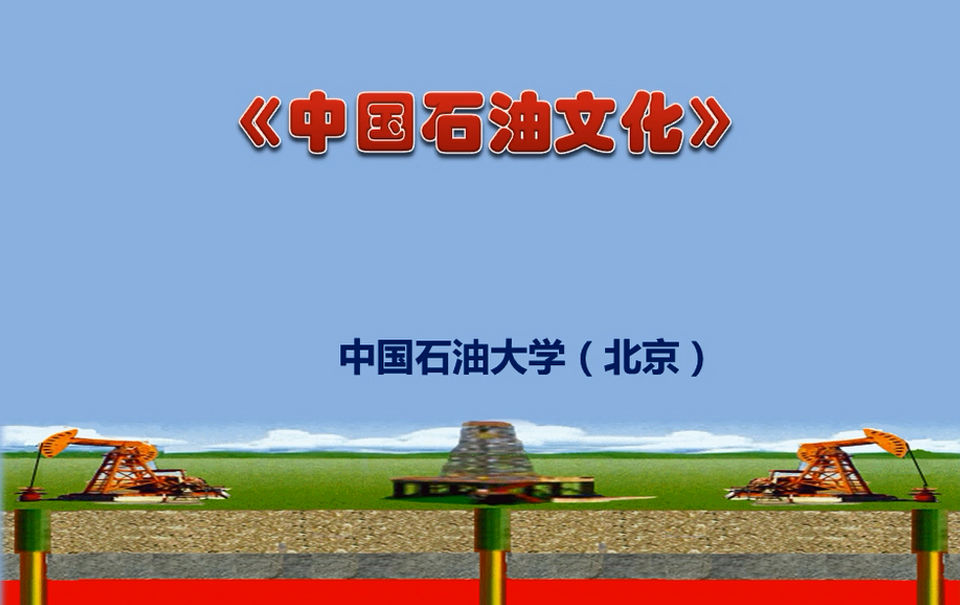
当前课程知识点:老年护理学(Gerontological Nursing) > CHAPTER7 Hospice Care for the Elderly > 【Case Discussion】CHAPTER 7 > 【Case Discussion】CHAPTER 6
返回《老年护理学(Gerontological Nursing)》慕课在线视频课程列表
A female patient, aged 79, is a retired worker and lives with her spouse. The chief complaint was fall-induced pain in the right hip with restricted mobility for 3h, and she was hospitalized. The patient accidentally fell on the slippery floor of the bathroom at home at 6:00 AM on February 18, 2018. She landed on her right hip, resulting in an immediate local swelling of the right hip. There was persistent pain in the right hip. The right lower limb was unable to move, and the patient could not walk. After the fall, her spouse called for help from the neighbors. The patient was lifted from the ground and sent to the emergency department of our hospital in a car. X-ray indicated a fracture of the right femoral neck. She was hospitalized through the emergency department for fracture of the right femoral neck. The patient had a history of osteoporosis for one year and a history of hypertension for five years. The highest blood pressure reached up to 170/85mmHg. Before the fall, she took one Amlodipine Besylate Tablet every morning. She reported a sleep disorder in the past month. She had difficulty falling asleep in the night and visited the outpatient clinic one week ago. After that, she took alprazolam 0.8mg before sleep each night, which improved sleep quality. Physical examination revealed: T36.7℃, P78 beats/min, R22 breaths/min, BP187/90mmHg, and clear consciousness. There was no skin rupture or bleeding, unconsciousness, nausea and vomiting, profuse sweating, chest and abdominal pain, or numbness in the two lower limbs. There was mild swelling in the right hip, but no etechia. The right lower limb presented with mild extorsion deformity in hip and knee flexion. There was apparent tenderness. Longitudinal percussion pain (+) was present in the right lower limb. The right hip had restricted mobility. No abnormalities were found in the mobility of the right knee and ankle joint. Neither were there abnormalities in blood supply and sensation of the limb endings.
After hospitalization, she received skin traction therapy in the right lower limb according to the doctor's instructions. The patient was nervous during the treatment with cold sweat. She complained of pain in the affected limb and refused skin traction therapy. She asked for analgesia first. After detailed explanations by the medical staff and the prescription of analgesic medications, the patient's emotions stabilized. The pain was soothed than before, and the patient showed more cooperation during skin traction therapy.
Questions:
1. What are the type and features of the pain that this patient is suffering?
2. What is the most appropriate method of pain evaluation for this patient at present? Please describe this method in details.
3. What are the overall goals of pain treatment and nursing for this patient?
4. In addition to medication therapy, are there any other nursing measures that can soothe the pain?
5. Is the procedure of emergency rescue reasonable after the fall? And why?
6. What are the risk factors for falls in this patient?
7. Before discharge, what should be the contents of health education administered by the nurse to the patient and relatives?
返回《老年护理学(Gerontological Nursing)》慕课在线视频列表
-1.1 Human Life Expectancy and Age Classification of the Elderly
--Human Life Expectancy and Age Classification of the Elderly
--【Vedio Recommendation】 How do we measure life expectancy ?
-1.2 Population Aging
--【Literature Recommendation】World Report on Ageing and Health: 2015
-1.3 Influence and Countermeasures of Population Aging
--Influence and Countermeasures of Population Aging
--【Literature Recommendation】World Population Ageing Highlights:2019
-1.4 Goals and Principles of Elderly Care
--Goals and Principles of Elderly Care
--【Book Recommendation】Evidence-Based Geriatric Nursing Protocols for Best Practice
-1.5 Theories Related to Elderly Care
--1.5.1 Personality Development Theory and Life Review
--1.5.2 Disengagement Theory and Activity Theory
--1.5.3 Self-efficacy and Chronic Disease Management
--【Vedio Recommendation】8 Stages of Development by Erik Erikson
--【Literature Recommendation】Activity Theory, Disengagement Theory, and Successful Aging
--【Book Recommendation】Self-Efficacy in Changing Societies
-1.6 Elderly Support and Elderly Care
--1.6.1 Concepts of Elderly Healthcare, Elderly Support and Elderly Care
--1.6.2 Home-based Elderly Care Model
--1.6.3 Institutional Elderly Care Model
--1.6.4 Integrated Medical and Nursing Care Model
--【Vedio Recommendation】Day in the Life of Home Care
--【Website Recommendation】Official Website of the National Institutes of Health
-Concept Map
--【Concept Map】General Introduction to Geronological Nursing
-【Test】CHAPTER 1
-2.1 Aging Changes in the Elderly
--2.1.1 Aging of the Respiratory System
--2.1.2 Aging of the Cardiovascular System
--2.1.3 Aging of the Digestive System
--2.1.4 Aging of the Urinary System
--2.1.5 Aging of the Endocrine System
--2.1.6 Aging of the Motor System
--2.1.7 Aging of the Nervous System
--2.1.8 Aging of the Sensory System
--【Literature Recommendation】Exercise Attenuates the Major Hallmarks of Aging
--【Book Recommendation】Hazzard's Geriatric Medicine and Gerontology
-2.2 Comprehensive Health Assessment of the Elderly
--Comprehensive Health Assessment of the Elderly
--【Literature Recommendation】Instruments to evaluate mental well-being in old age: a systematic review
-2.3 Principles of Elderly Health Assessment
--Principles of Elderly Health Assessment
-2.4 Assessment of the Functional Status of the Elderly
--Assessment of the Functional Status of the Elderly
--【Literature Recommendation】The Lawton Instrumental Activities of Daily Living (IADL) Scale
-2.5 Assessment of Cognitive Function in the Elderly
--Assessment of Cognitive Function in the Elderly
-2.6 Assessment and Adjustment of the Living Environment for the Elderly
--Assessment and Adjustment of the Living Environment for the Elderly
-Concept Map
--【Concept Map】Elderly Health Assessment(1)
--【Concept Map】Elderly Health Assessment(2)
-【Test】CHAPTER 2
-3.1 Overview of the Psychological Characteristics of the Elderly
--Overview of the Psychological Characteristics of the Elderly
-3.2 Influencing Factors of Psychological Changes in the Elderly
--Influencing Factors of Psychological Changes in the Elderly
-3.3 Common Psychological Issues and Their Management in the Elderly
--3.3.1 Common Psychological Issues and Their Management in the Elderly (1)
--3.3.2 Common Psychological Issues and Their Management in the Elderly (2)
--【Book Recommendation】Development Through the Lifespan
-3.4 Depression in the Elderly
--3.4.1 Overview of Depression in the Elderly
--3.4.2 Clinical Symptoms of Depression in the Elderly
--3.4.3 Caring for Elderly Patients with Depression
--【Documentary Recommendation】Depression:Out of the Shadows
-3.5 Elderly Patients with Dementia
--3.5.1 Identification of Dementia Symptoms in the Elderly
--3.5.2 Intelligence Rehabilitation of Elderly Patients with Dementia
--3.5.3 Safety Care of Elderly Patients with Dementia
--【Website Recommendation】The Global Voice on Demaentia
-Concept Map
--【Concept Map】Elderly Mental Health and Mental Health Care
-【Test】CHAPTER 3
-4.1 Precautions for Daily Care of the Elderly
--Precautions for Daily Care of the Elderly
-4.2 General Care of Elderly Skin
--4.2.1 Characteristics and General Care of Elderly Skin
--4.2.2 Skin Itching and Its Management in the Elderly
--【Website Recommendation】American Academy of Dermatology
-4.3 Clothing Hygiene for the Elderly
--Clothing Hygiene for the Elderly
--【Literature Recommendation】The Design Methods of Functional Clothing for the Elderly
-4.4 Dietary Care for the Elderly
--4.4.1 Nutritional Needs of the Elderly and Influencing Factors of these Needs
--4.4.2 Dietary Care for the Elderly
--【Book Recommendation】Nutrition Care of the Older Adult: a Handbook for Dietetics
--【Website Recommendation】Nutrition for older persons
-4.5 Sleep Guidance for the Elderly
--4.5.1 Sleep Characteristics of the Elderly
--4.5.2 Sleep Guidance for the Elderly
--【Book Recommendation】An Occupational Therapist's Guide to Sleep and Sleep Problems
--【Website Recommendation】American Academy of Sleep Medicine
-4.6 Exercises Guidance for the Elderly
--4.6.1 Evaluation of Exercise Intensity in the Elderly
--4.6.2 Precautions Elderly Undertaking Exercises
--【Website Recommendation】American College of Sport Medicine
--【Book Recommendation】Handbook of Activities for the Elderly
-Concept Map
--【Concept Map】Elderly Daily Care
-【Test】CHAPTER 4
-5.1 Characteristics of Drug Metabolism and Pharmacodynamics in the Elderly
--Characteristics of Drug Metabolism and Pharmacodynamics in the Elderly
--【Website Recommendation】How Drugs Work In the Elderly
-5.2 Common Adverse Drug Reactions and Their Causes in the Elderly
--Common Adverse Drug Reactions and Their Causes in the Elderly
-5.3 The Principles of the Use of Medications in the Elderly
--The Principles of the Use of Medications in the Elderly
-5.4 Prevention of Adverse Drug Reactions in the Elderly
--Prevention of Adverse Drug Reactions in the Elderly
-5.5 Medication Compliance in the Elderly
--Medication Compliance in the Elderly
-Concept Map
--【Concept Map】Medication Safety and Care for the Elderly
-【Test】CHAPTER 5
-6.1 Falls in the Elderly
--6.1.1 Epidemiological Characteristics of Elderly Falls
--6.1.2 Risk Factors for Falls in the Elderly
--6.1.3 Prevention of Falls in the Elderly
--【Website Recommendation】CDC STEADI(Stopping Elderly Accidents, Deaths & Injuries Tool Kit)
-6.2 Dysphagia in the Elderly
-6.3 Urinary Incontinence in the Elderly
--Urinary Incontinence in the Elderly
-6.4 Constipation in the Elderly
-6.5 Dry Mouth in the Elderly
--【Website Recommendation】Academy of Nutrition and Dietetics
-6.6 Elderly Nutritional Deficiencies
--Elderly Nutritional Deficiencies - emaciation
-6.7 Visual Impairment in the Elderly
--Visual Impairment in the Elderly
--【Website Recommendation】Senior Eye Exams
-6.8 Senile Deafness
-6.9 Elderly Delirium
-6.10 Elderly Frailty
--【Literature Recommendation】Frailty in elderly people/Frailty in older people
-6.11 Pneumonia in the Elderly
-6.12 Hypertension in the Elderly
--【Literature Recommendation】2018 Chinese Guidelines for Prevention and Treatment of Hypertension
-6.13 Stroke in the Elderly
-6.14 Stable Angina in the Elderly
--Stable Angina in the Elderly
-Concept Map
--【Concept Map】Nursing Care for the Elderly with Common Health Problems and Diseases
-【Test】CHAPTER 6
-7.1 Concept of Hospice Care
--【Website Recommendation】 Definition of Palliative Care,WHO
-7.2 Death Education
--【Book Recommendation】The Meaning of Death by Herman Feife
-7.3 Nursing for Pain in the Dying Elderly
--Nursing for Pain in the Dying Elderly
-7.4 Nursing for Major Bleeding in the Dying Elderly
--Nursing for Major Bleeding in the Dying Elderly
-7.5 Nursing for Delirium in the Dying Elderly
--Nursing for Delirium in the Dying Elderly
-7.6 Nursing for Dyspnea in the Dying Elderly
--Nursing for Dyspnea in the Dying Elderly
--【Website Recommendation】The Hospice and Palliative Nurses Association,HPNA
-7.7 Psychological Problems and Nursing in the Dying Elderly
--Psychological Problems and Nursing in the Dying Elderly
--【Book Recommendation】On Death and Dying ,by Elisabeth Kübler-Ross
-7.8 Grief Counseling for the Widowed Elderly
--Grief Counseling for the Widowed Elderly
--【Book Recommendation】I Wasn't Ready to Say Goodbye,by Noel·Brook,Blair·Pamela
-Concept Map
--【Concept Map】Hospice Care for the Elderly
-【Test】CHAPTER 7


